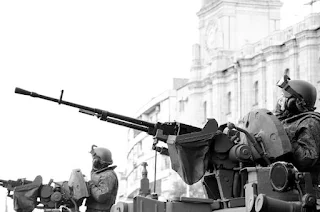World War I, often dubbed as the "Great War," left an indelible mark on the course of history, shaping the world we live in today. Beyond the well-known facts, there are intriguing and lesser-known aspects of this colossal conflict that continue to captivate historians and enthusiasts alike. In this article, we'll delve into some amazing facts about World War I that are sure to pique your interest and provide a fresh perspective on this pivotal moment in time.
1. The Pigeon Post
In an era before advanced communication technology, pigeons played a crucial role in relaying messages across the front lines. The most famous of these messenger pigeons was Cher Ami, a bird that saved the lives of nearly 200 soldiers by delivering a vital message despite being injured in the process. Cher Ami's heroic efforts earned the bird the French Croix de Guerre medal for bravery.
2. Tunnels and Trench Warfare
Trench warfare was a defining feature of World War I, but what many may not know is the extensive tunnel network that existed beneath the trenches. Soldiers on both sides dug intricate tunnel systems for various purposes, including surprise attacks, storage, and shelter. These subterranean passages often stretched for miles and added a layer of complexity to the already challenging conditions in the trenches.
3. The Christmas Truce of 1914
In a remarkable display of humanity amidst the horrors of war, the Christmas Truce of 1914 saw soldiers from opposing sides temporarily cease hostilities to celebrate Christmas together. Soldiers exchanged gifts, sang carols, and even played football in no man's land. This spontaneous truce, though unofficial and short-lived, stands as a poignant reminder of our shared humanity even in the darkest of times.
4. War on Four Legs
Horses played a significant role in World War I, serving as cavalry mounts, transport animals, and even companions to soldiers. The war witnessed the extensive use of millions of horses, enduring the same harsh conditions as their human counterparts. Sadly, many of these loyal animals perished in the brutal conflict, their sacrifice often overlooked in the annals of history.
5. Chemical Warfare
World War I marked the first large-scale use of chemical warfare, introducing deadly agents such as mustard gas and chlorine. These chemical weapons inflicted unimaginable suffering on soldiers, causing respiratory issues, blindness, and death. The devastating impact of chemical warfare prompted the subsequent development of international treaties to ban such weapons, underscoring the horrors witnessed during this conflict.
6. The Birth of Modern Medicine
The medical challenges presented by World War I spurred significant advancements in medical practices and technologies. Innovations like blood transfusions, plastic surgery, and the widespread use of antiseptics emerged from the desperate need to treat the unprecedented number and severity of injuries sustained on the battlefield.
7. The Red Baron's Legacy
Manfred von Richthofen, famously known as the Red Baron, was a German fighter pilot with an unparalleled record of 80 confirmed kills. His legacy endures as one of the most celebrated and feared aces of World War I aviation. The Red Baron's exploits in the skies continue to capture the imagination of aviation enthusiasts and historians alike.
Conclusion
World War I, with its intricate tapestry of stories and events, remains a compelling subject that transcends time. These fascinating facts offer a glimpse into the lesser-explored facets of the Great War, highlighting the resilience, innovation, and humanity that emerged amidst the chaos. As we reflect on this pivotal moment in history, let us not only remember the sacrifices made but also appreciate the lessons learned and the progress achieved in the aftermath of this transformative conflict.



